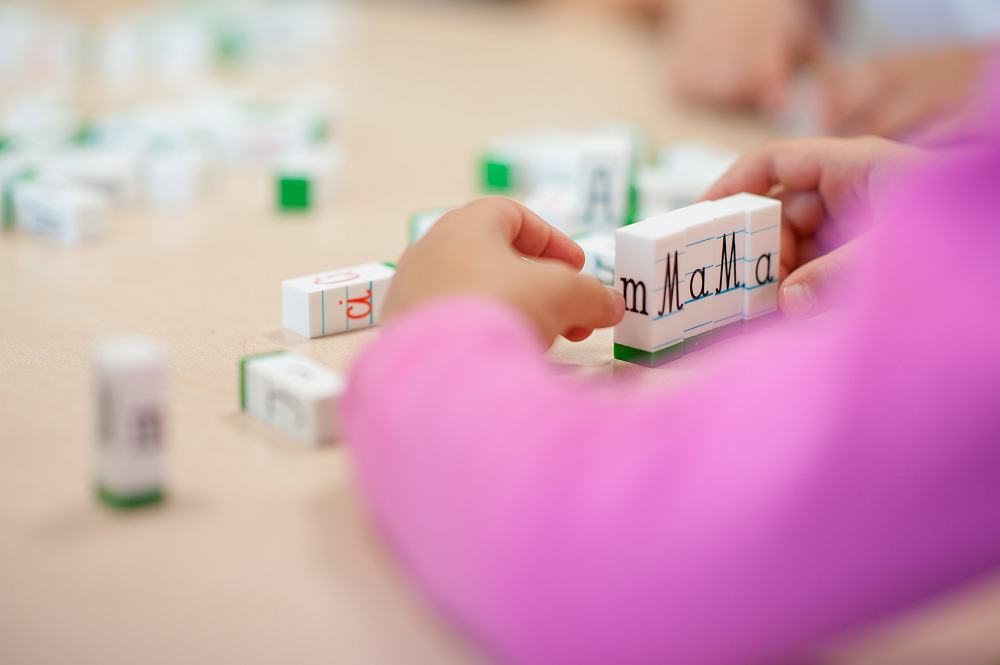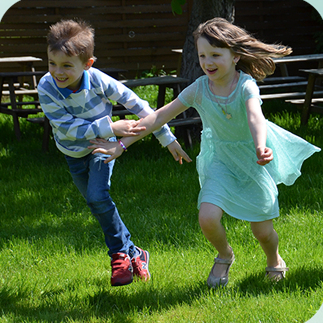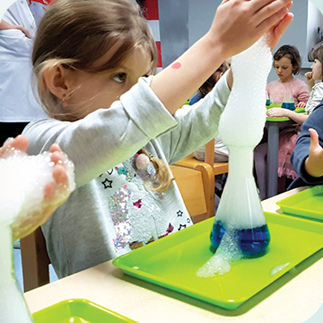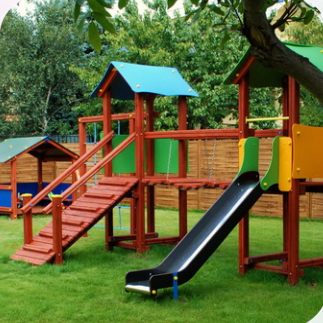When implementing the curriculum, our teachers use many recognized methods, choosing them for the type of activities and the age of the Children.
Dziecięca Matematyka E. Gruszczyk - Kolczyńska
The program is designed to stimulate children's mathematical abilities and prepare them for school. At the core of the program was the belief that "in the mathematical education of preschoolers, the most important thing is the personal experience of a child, because they are the basis for creating concepts and acquiring new skills, and thus developing thinking." (E. Gruszczyk - Kolczyńska).
Following the trail marked out by prof. E. Gruszczyk Kolczyńska for mathematics education in kindergarten we use natural situations from everyday life, in which children naturally become familiar with basic mathematical concepts.
The main assumption of the program is the development of mathematical competences in preschool children and the development of emotional resilience necessary to start school.
Glottodidactics Bronisława Rocławskiego
It is a new preparation method for learning to read and write. It is based on a set of tasks, games and exercises aimed at achieving an appropriate level of articulation and phonemic hearing skills by the child, as well as voice analysis and synthesis of words.
Play Pedagogy
It is a method based on movement and play as the basic, most free and natural form of children's activity. Attractive and colorful teaching aids will satisfy children's curiosity and make children play and learn at the same time.
Educational Kinesiology
Educational Kinesiology, the creator of which is Dr. Paul Dennison, is a method of supporting the natural development of humans, regardless of their age, through various movement exercises aimed at "reviving" the mechanisms of the brain.
Exercises for Brain Gymnastics:
- They stimulate specific parts of it, making the new way of learning more natural and spontaneous
- They are conducive to better remembering.
- They improve eye-hand coordination
- They help to calm down and focus your attention on the activity being performed.
Good Start Method
In developing thinking and speech, we use elements of the good start method, the main goal of which is the comprehensive psychomotor development of children, which in turn fantastically prepares them for learning to read and write.
Thanks to the classes based on the method of Prof. M Bogdanowicz children:
- improve manual skills
- they practice eye-hand coordination and spatial orientation
- develop memory and concentration of attention
- allow for a natural, attractive introduction to the world of signs and letters for a child
- The Development Movement of Veronica Sherborne
A child starting preschool education feels lost. New children, new space. As a help in adapting to the new environment and integration with peers, we include in our offer the method of the Developmental Movement by W. Sherborne. It is a system of gymnastic exercises that use touch, movement and mutual physical, emotional and social relationships. It is based on several activity groups, thanks to which the child gradually gains a sense of security in a new environment.
Those are:
- exercises leading to getting to know your own body
- exercises to gain self-confidence and a sense of security in the environment
- exercises to facilitate contact and cooperation with a partner and group
- creative exercises
The use of this method supports not only motor development but also:
- helps the child to get to know his own body and the space around it
- it teaches how to cooperate and make contact with another person
- supports the socio-emotional development of children
Elements of fairy-tale therapy
Daily reading or listening to various fairy tales develops children's imagination and develops linguistic functions (vocabulary, the ability to build longer statements). While listening to the fairy tale, children also rest, calm down after classes and active play.
Fairy tales, fairy tales and radio plays carefully selected by our team:
- they teach how to deal with various problems
- shape the skills of creative thinking, breaking patterns and stereotypes
- build self-esteem
- develop emotional intelligence and empathy
Drama elements
In our didactic and educational work, we reach for elements of the drama method because it allows children to learn about the world through action. These classes introduce children to the world of art, while activating their spontaneous creativity. They are conducted on the basis of children's natural curiosity and interest in imitation games typical of preschool age. The "play in theater" initiated by teachers has a large impact on moral attitudes, shapes the personality of the little person and also:
- develops imagination, allows the child to create a reality that is unique to him
- allows the child to express themselves through various forms of expression, introduces them to the methods of non-verbal communication
- develops cognitive processes: speech, memory, concentration of attention
- shapes the precision of movements of the whole body
- gives self-confidence, develops self-confidence
Research Projects
"Projects are a kind of 'backbone' of educational experiences of children and teachers. They are based on a deep belief that learning by doing has deep value, and group discussions and returning to previous ideas and experiences are the best way to gain and expand knowledge "
Gandini: about the method of projects, 1997
What is the project method?
The project method is one of the many teaching methods in our kindergarten. It is primarily a response to children's curiosity about the world, bringing the young researcher the joy of discovering for himself.
The project method is based on the principle of subjective treatment of children, expressed through:
- the right to choose the task
- the right to look for possible ways to solve the task on your own (sense of influence)
- the right to self-assessment, both as to the manner of performing the task and the result achieved (sense of control)
The subjective treatment of the child in the process of his education makes the teacher a guide, co-organizer and advisor in the learning process: this, in turn, leads to the child's increased responsibility for its own activity.
Preschoolers are fascinated by many things. The choice of the research topic is derived from the circles of children's interests and also relates to their life experiences.
The project enables pupils to apply the newly acquired knowledge in practice, while solving problems and sharing information. It also gives an opportunity to develop teamwork skills.
Research has shown that children who have experienced the freedom to initiate action achieve very good results in learning to read, write and count.














